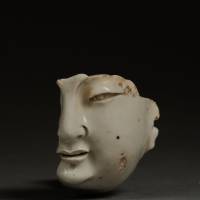Subtle and creamy-white in coloration, Ding Ware has a refined aesthetic. It was created during the Tang Dynasty (618-907) and became one of the most highly desired pottery forms of the Song (960-1279) to Jin (1115-1234) dynasties.
Treasured by emperors and other elites, Ding Ware was produced in large quantities for both personal and official use. This exhibition presents the finds of a 2-year-long, large-scale excavation that began in 2009 at the Ding kiln site and was led by the Hebei Provincial Institution of Culture Relics and Archaeology. It presents 66 excavated findings from the site, which is known to be one of the greatest Chinese archaeological discoveries. New historical information and notes on the artisans' process are also presented; Nov. 23- March 23.
The Museum of Oriental Ceramics, Osaka. 1−1−26 Nakanoshima, Kita-ku, Osaka. Naniwabashi Stn. 9:30 a.m.- 5 p.m. ¥ 800. Closed Mon. 06-6223-0055; www.moco.or.jp



